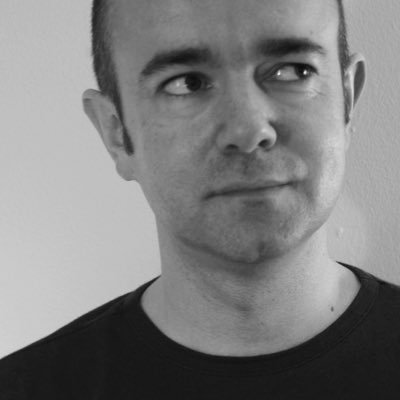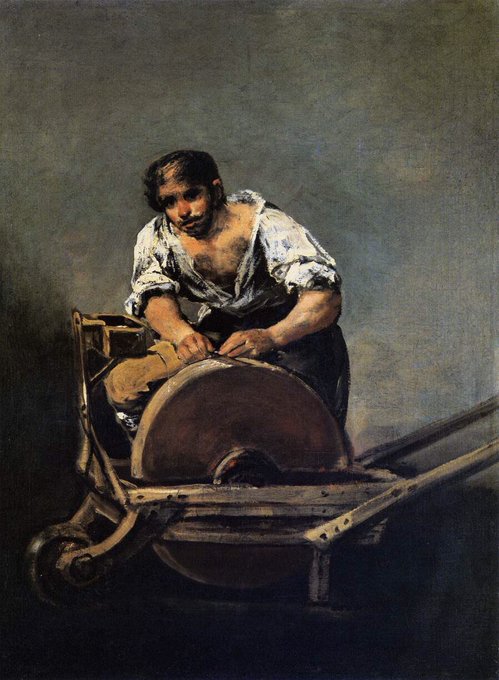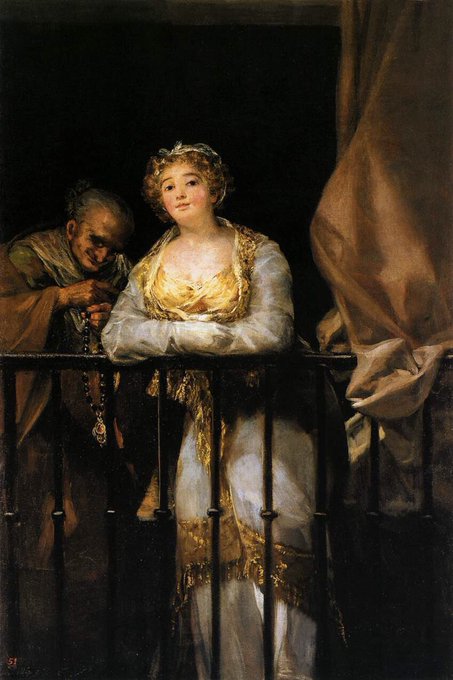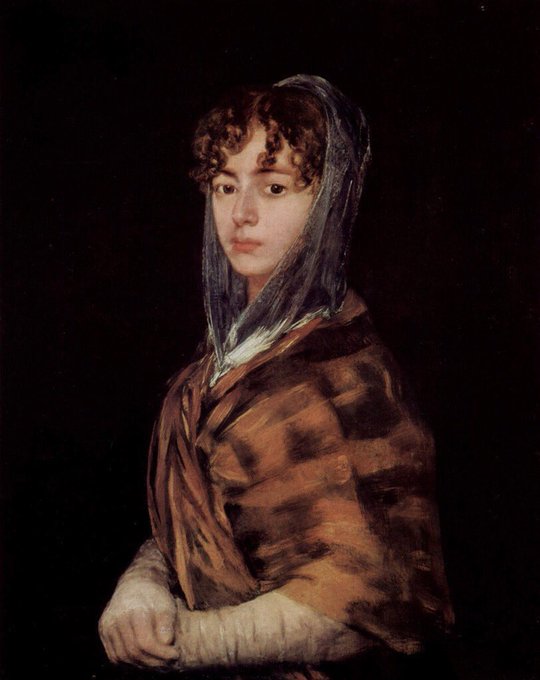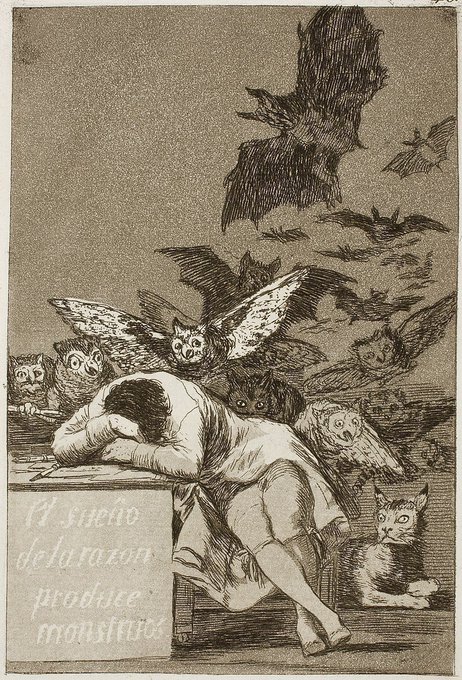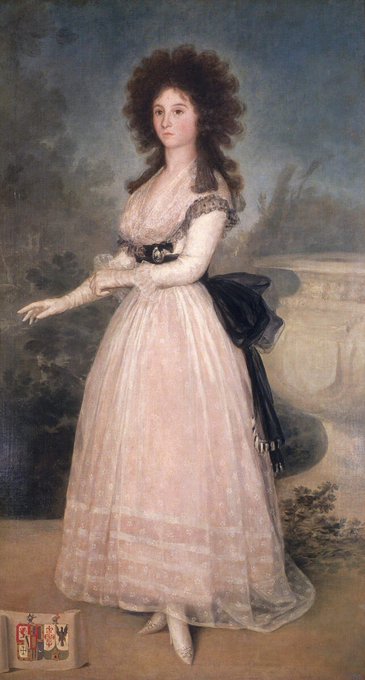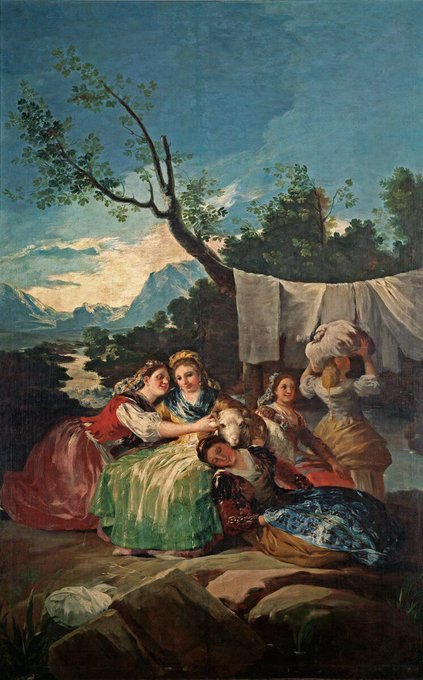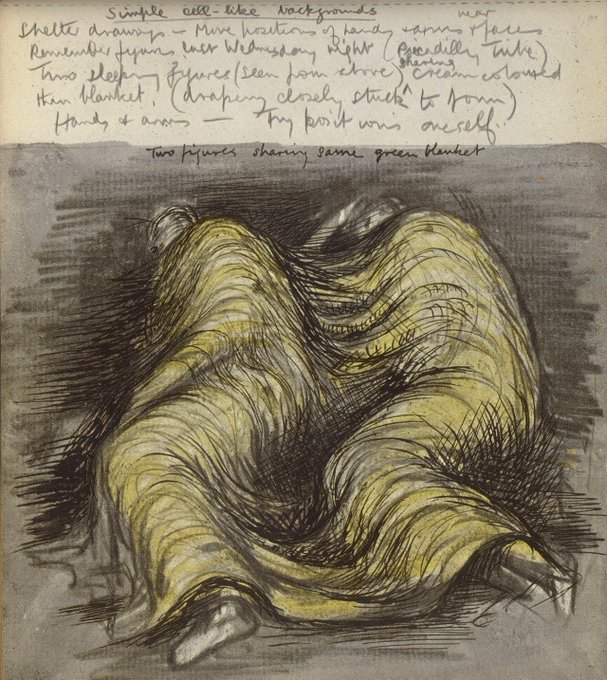Spain was invaded in 1808 & although he did produce work for the imposed court he sought to remain neutral. Lady with Fan (1806-7), Knife Grinder (1808-12), Maja & Celestina (1808-12) & The Colossus (1808)
Goya had a complete breakdown both physically & mentally. The Caprichos are a response to the violence of the times as well as the assault on his mind & body. Miserol (1804-6), Teresa Sureda (1804-6), Francisca Sabasa y Garcia (1804-8) & Doña Isabel de Porcel (c1805)
Illness struck the artist (1792-3) & left him deaf. It’s likely that the sense of isolation led to his dark & startling Caprichos (published in 1799). These were macabre images from his subconscious which continue to inhabit the viewer’s mind, once seen.
His portraits have a pungent awareness of psychology. Marqueza Pontejos (1786), The Snowstorm (1786-7), Self-Portrait (1790-5) & Dona Tadea Arias de Enríquez (1793-4)
From 1772 he created some 42 patterns for the Royal Tapestry Factory in the Rococo style. He also pursued etching at this time, a medium in which he still remains famous. These tapestry designs are relaxed & charming images.
Thread: Francisco Goya (1746-1828) was one of the greatest artists in history, a Romantic painter & a master of the portrait. He also created his superb black paintings which explored his troubled subconscious. He also painted some of the most powerful war images.
And here are drawings that Henry Moore made of the Londoners sheltering from Hitler’s bombs
In recent years his portraits have raised great interest. His approach is empathetic & fascinating - it’s as if we are partaking in his curiosity. Christine Nilson (1874), Lady in Blue (1874) & Road from Volterra (nd)
His pictures of the 1860s often included either nymphs or peasants. The critics preferred peasants & complained if he included mythological creatures. Mother & Child (c1860), Reverie (1860-5) & the Curious Little Girl (1860-4)
He took on students who then worshipped him & even trained Pissarro for a while thus handing on his knowledge to the Impressionists. Brooding Girl (c1857), The Road to Sevres (1858-9) & a Road in Normandy (1860-5)
